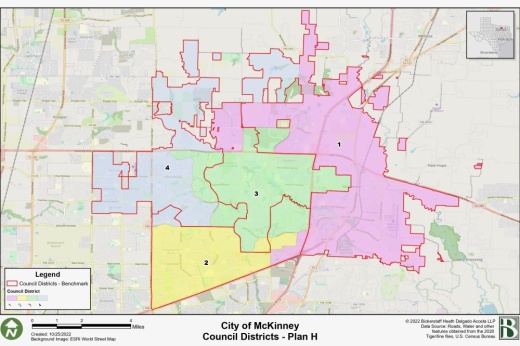The council considered 10 maps, labeled as plans A through H with some revised and alternate names, and ultimately chose Plan H, a map that was a compromise and catered to concerns previously expressed by the council, McKinney Mayor George Fuller said at the meeting.
The districts most affected by the realignment are districts 1 and 3, represented by Justin Beller and Geré Feltus, respectively. District 1 has most of its change in the northern portion of the district with some change in the south, while District 3 has expansions to the north, east and west. Districts 2 and 4 have lesser realignments but still some change on the western and southern borders of the city.
“We had a couple of meetings that were uncomfortable ... fully because I truly believe that each of us are trying to defend what we feel is best for the city,” Feltus said.
The redistricting process began November 2021 and has been discussed at seven previous City Council meetings in 2022, including a public hearing in May. The vote was intended to realign McKinney’s four single-member districts into approximately equal populations.
The district boundaries were last drawn in 2011, after the 2010 decennial census, to include roughly 35,000 people in each district. The new district boundaries will include roughly 49,000 people in each district, according to meeting documents.
At a Oct. 18 council meeting, Council Member Justin Beller said this round of redistricting is the first time since the implementation of McKinney’s four single-member districts that the redistricting map will not require preclearance by the Department of Justice as a result of a change in federal case law due to Shelby County v. Holder.
Various community members spoke during the public hearing at the Nov. 1 meeting about concerns for the potential effects redistricting will have on the McKinney community. Legal firm Bickerstaff also assisted in the redistricting process.





